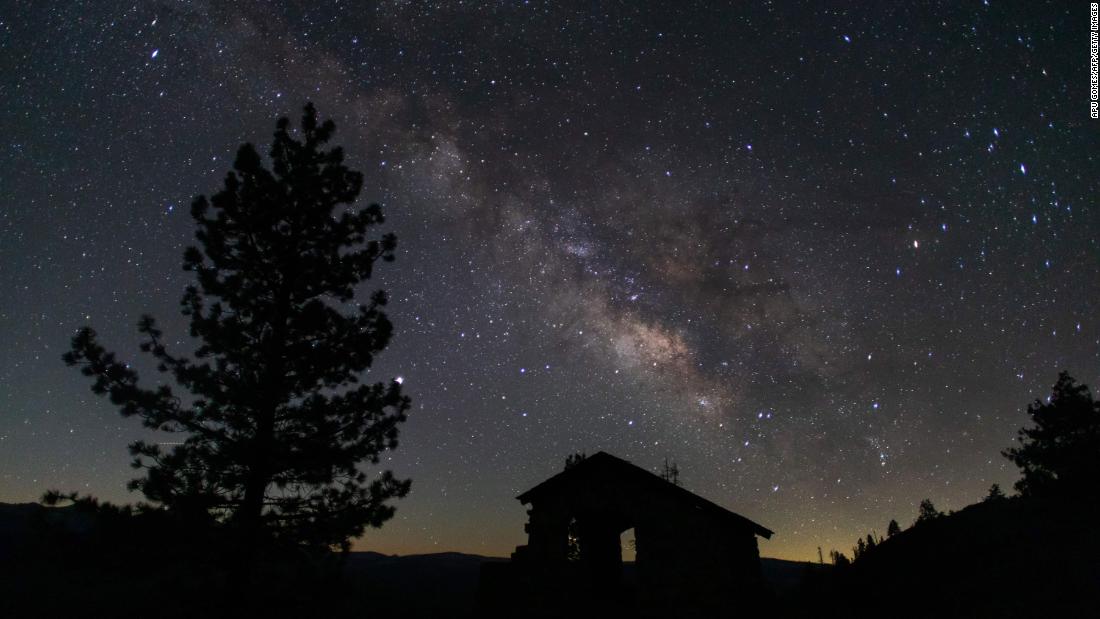There will be full moons, meteor showers, eclipses, and planets visible in the morning and evening sky around the world in 2021.
The biggest obstacle to being able to see meteor showers that can only be seen from certain hemispheres – regardless of your location – is the brightness of the moon. The higher the full moon, the more difficult it is to see meteors streaming across the sky.
Eta Aquariids follow soon after, and peak on May 5 when the moon is 38% full. This shower is best seen in the southern tropics, but it will still produce an average shower for those north of the equator.
Delta Aquariids are best seen from the southern tropics and will peak between July 28-29 when the moon is 74% full.
Interestingly, another meteor shower peaks on the same night – Alpha Capricornids. Although this shower is much weaker, it has been known to produce some bright fireballs during climax. And it will be visible to those on either side of the equator.
The Perseid meteor shower, the most popular of the year, will peak between August 11 and 12 in the Northern Hemisphere when the moon is only 13% full.
- October 8th: Draconids
- October 21: Orionids
- November 4-5: Southern Taurids
- November 11-12: North Torres
- November 17th: Leonids
- December 13-14: Gemini
- December 22: Ursids
Full moon
In a normal year, 2021 will also be 12 full moons. (Last year there were 13 full moons, two of them in October.)
- Jan 28 – Wolf Moon
- February 27 – Snow Moon
- March 28 – Moon Worm
- April 26 – Pink Moon
- May 26 – Moonflower
- June 24 – Strawberry Moon
- July 23 – Pak Moon
- August 22 – sturgeon moon
- September 20 – Harvest Moon
- October 20 – Hunter’s Moon
- November 19 – Beaver Moon
- December 18 – Cold Moon
Solar eclipse and lunar eclipse
A total lunar eclipse will occur on May 26, and are best visible in western North America and Hawaii from 4:46 AM to 9:51 AM ET.
An annular solar eclipse will occur on June 10, and can be seen in North and Northeast North America from 4:12 AM to 9:11 AM ET. The moon will not block the sun completely, so be sure to wear eclipse glasses to safely witness the event.
November 19 will see a partial lunar eclipse and skywatchers will see in North America and Hawaii between 1am ET and 7:06 AM ET.
The year ends with a total solar eclipse on the fourth of December. It won’t be seen in North America, but those in the Falkland Islands, the southern tip of Africa, Antarctica and southeast Australia will be able to spot it.
Visible planets
Most of it can be seen with the naked eye, with the exception of distant Neptune, but binoculars or a telescope will provide the best view.
Mercury will appear as a bright star in the morning sky from February 28 to March 20, from June 27 to July 16, and from October 18 to November 1. It will shine in the night sky from January 15th to January 31st, and May 3rd to May 24th. , From August 31 to September 21 and from November 29 to December 31.
Venus, our closest neighbor in the solar system, will appear in the eastern sky in the morning from January 1 to 23, and in the western sky at dusk on the evenings of May 24 to December 31. It is the second brightest object in our sky after the moon.
Mars shows its reddish appearance in the morning sky between November 24 and December 31 and will be visible in the evening sky between January 1 and August 22.
Jupiter, the largest planet in our solar system, is the third brightest object in our sky. It will be shown in the morning sky between February 17 and August 19. Look for it on evenings from January 1 to January 9 and August 20 to December 31 – but it will be in its prime from August 8 to September 2.
Saturn’s rings can only be seen through a telescope, but the planet itself can still be seen with the naked eye in the mornings from February 10 to August 1 and on evenings from January 1 to January 6 and from August 2 to December 31. The brightest between 1 to 4 August.
Binoculars or a telescope will help you spot the green glow of Uranus in the mornings from May 16 to November 3 and in the evenings of January 1 to April 12 and from November 4 to December 31 – but at its height between August 28 and December 31.
And our farthest neighbors in the solar system, Neptune will be visible through the telescope in the mornings from March 27 to September 13 and in the evenings of January 1 to February 23 and from September 14 to December 31. November 19 and 8.

“Appassionato di alcol. Piantagrane. Introverso. Studente. Amante dei social media. Ninja del web. Fan del bacon. Lettore”.

